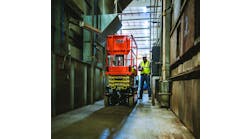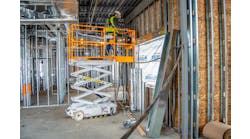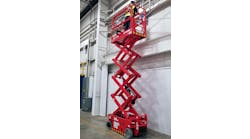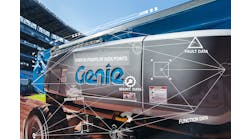In RER’s June issue, we interviewed a number of manufacturers of lawn and garden equipment and have reprinted them in RER Reports. In the last of the series, Andrew Johnson, Little Wonder Product Manager for Schiller Grounds Care talks with RER editor Michael Roth about ease-of-use features, improved control of airflow, the effect of environmental legislation on R&D, and the serviceability trend.
RER: What are the main areas of technological advancement in your product line, in the industry in general?
Johnson: The power equipment industry is focused on helping operators get more done in less time, and wheeled blowers are a tool that achieves this. Little Wonder wheeled blowers are world-renowned for performance, power and durability. The units are steel constructed, feature a unique fan design and curved aerodynamic inlet that provides for its exceptional airflow with a split-stream air deflector that eliminates blow-back and provides for controlled movement of large amounts of debris. These are standard features of all Little Wonder blowers. Our product development focus is on ease of use. Ease of use goes a long way to enhancing productivity. A wheeled blower that is easy to operate, maneuver, and transport, aids significantly in getting a job done faster and moving on to the next job quicker.
We are about to introduce our all new 2011 Optimax Blower line that will incorporate many new ease- of-use features. One new exciting feature to our larger models is a lever that controls the direction of airflow from the operator’s handle position. Now operators have non-stop control of the split-stream air deflector without having to stop and adjust the stream manually. We are also bringing our own style of self-propelled technology to the Optimax blower lineup this year. It’s an exciting time for the Little Wonder brand and we are very happy to bring these new conveniences and more to our customers this season.
What are some of the trends you see now and in the foreseeable future in your type of equipment?
Increased power and improved control of the airflow are trends that meet our customer’s needs. There is more focus on all aspects of getting the job done including transportation, where it’s important to be able to secure and protect equipment when moving from job to job, so we have two tie-down brackets on our new blowers. There is also interest in self-propelled blowers, especially for clearing hilly areas and contractors who have to clear many areas in a single day. Our new self-propelled units feature powered forward and reverse and have variable speed to match the job conditions.
Is fuel efficiency a big concern in today’s market and if so what are you doing to address that concern?
Operating costs generally are a big issue. Fuel efficiency and productivity are certainly part of that concern. Recent improvements in small engine technology has raised output and increased fuel economy at the same time. For example, the new Honda GX engines have increased compression ratios and changed engine timing to deliver 6 percent more power and use 10 percent less fuel than last year’s models. We adopted these engines and other top performing brands into our 2011 line as well. There’s also frustration with the short shelf life and increased operating temperature of 2-cycle fuel that is clogging carburetors and shortening the life of the backpack and handheld blowers; 4-cycle engines tend to have less of those issues.
What EPA, CARB regulations or other environmental concerns are affecting your R&D, the manufacturing and marketing of your equipment?
R&D is an area of a business plan that, if you do not plan and network carefully, can be costly and time-consuming anytime you change any component of an existing product. Engine changes to an existing product can be substantial because they often require changes to the unit itself, as the engine weight and engine design may have differed from the previous model, where unit adjustments may need to be made to mount the new engine, maintain unit balance, and operator control conveniences. We understand their importance and support incorporating cleaner burning, more fuel-efficient engines throughout our product lines whenever available. We recently added new engines to our debris vacuum, powered edgers and truck loaders as well as new engines coming to our new 2011 blower line.
What are some of the trends you see in the rental industry in terms of lawn & garden equipment and how do those trends affect your business?
Watching costs and utilization are key and providing productive equipment that lasts in a rugged environment continues to be important, but the trend in these tough economic times is serviceability. We’ve incorporated dual element air cleaners and oil level sensors on all of our larger models so that the machines last longer and monitor themselves for critical oil level. This makes the machines easier to service and improves their durability. That leads to more uptime and increased utilization.
Any particular advice to rental companies in terms of how to be successful renting your kinds of equipment?
There is a saying in sales, “displays sell product”. Displays rent products too. Product displays are an especially powerful tool in power equipment rental because there are many aspects of the equipment the display can cover for the customer at a glance — unit size, environment of use, engine type, and equipment specifications — the customer can access most of that information by seeing the unit presented in nice display. That starts with creating attractive displays that allow access to the machine with an up-to-date graphics package and color scheme that call attention to the unit’s key features and benefits. Rental stores can often attain product displays and promotional material at a reduced cost or even free from the manufacturer by contacting their distributor or manufacturer’s sales rep.
Rental stores also benefit by having an ample stock of machines available during their high use season.





